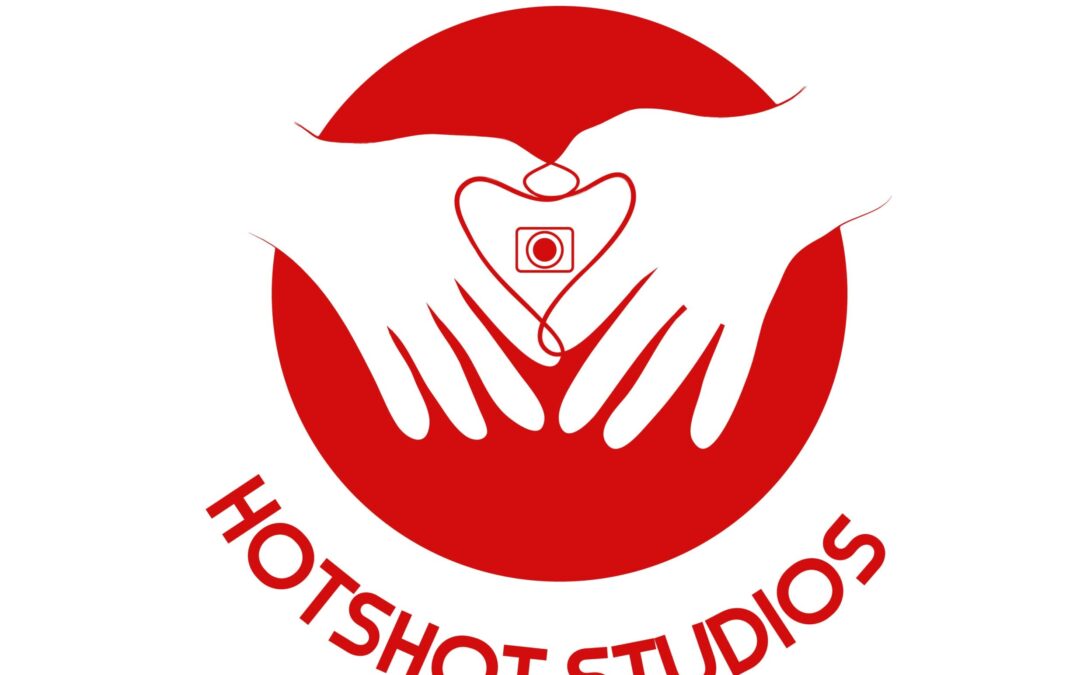Creating an Awesome Logo: Tips from the Pros
Your company logo is the face of your brand. It’s the first thing that customers see and it’s the image that will stick in their minds. So, it’s important to get it right. But creating an awesome logo is easier said than done. It takes creativity, skill, and a good understanding of branding and design principles. That’s why we’ve reached out to some of the top professionals in the industry to get their expert tips on creating an awesome logo. From choosing the right colors and fonts to making sure your logo is versatile and memorable, these pros know what it takes to create a logo that stands out in a crowded marketplace. So, whether you’re starting a new business or looking to revamp your existing logo, read on to discover the secrets behind creating an awesome logo that will help your brand shine.
The importance of a good logo
Your company’s logo is the face of your brand. It is the visual representation of your company that will be seen by customers, clients, and potential partners. A good logo is essential to building brand recognition and establishing your company’s identity. A poorly designed logo can have the opposite effect, making your brand look unprofessional or untrustworthy. Your logo should be memorable, unique, and timeless. It should communicate your company’s values and personality in a way that resonates with your target audience.
A good logo can also help you stand out in a crowded marketplace. With so many companies competing for customers’ attention, it’s important to have a logo that sets you apart from the rest. Your logo should be easy to recognize and distinguishable from your competitors’ logos. This will help ensure that your brand is remembered and considered when customers are making purchasing decisions.
A great logo can also help you establish a strong brand identity. Your logo should reflect your company’s values, mission, and personality. This will help customers identify with your brand and build a connection with your company. When your logo is consistent across all marketing materials, it can help establish a sense of trust and reliability with your audience.
Elements of a great logo
There are several elements that go into creating a great logo. These include the design, color, typography, and overall style. A great logo should be simple, memorable, and versatile. It should be easily recognizable at a glance and should work well in a variety of sizes and formats.
Design is one of the most important elements of a great logo. A well-designed logo should be visually appealing and easy to understand. It should communicate your brand’s personality and values in a way that resonates with your target audience. The design should be simple and uncluttered, with a clear focus on the most important elements.
Color is another important element of logo design. Different colors can evoke different emotions and convey different meanings. For example, blue is often associated with trust and reliability, while red is associated with passion and excitement. Your choice of colors should be based on your brand’s personality and the emotions you want to evoke in your target audience.
Typography is another important element of logo design. The font you choose can have a big impact on how your logo is perceived. A font that is too complex or difficult to read can make your logo look unprofessional, while a font that is too simple can make your brand look boring. The key is to choose a font that is easy to read and reflects your brand’s personality.
Overall style is the final element of logo design. Your logo should be consistent with your brand’s overall style and aesthetic. This will help ensure that your logo fits in with your other marketing materials and helps establish a consistent brand identity.
Logo design trends
Logo design trends are constantly changing, as designers experiment with new styles and techniques. Some of the current logo design trends include minimalist designs, bold typography, and the use of negative space. Minimalist designs are simple and uncluttered, with a focus on the most important elements of the logo. Bold typography is used to create a strong, memorable impression, while negative space is used to create a visual illusion or to highlight a specific element of the logo.
Another trend in logo design is the use of gradients and color transitions. This technique involves blending two or more colors together to create a seamless transition between them. This can create a sense of depth and dimensionality in the logo, making it more visually interesting and engaging.
One of the most popular logo design trends in recent years is the use of hand-drawn logos. Hand-drawn logos have a unique, personalized feel that can help establish a connection with your audience. They are often used by companies that want to convey a sense of authenticity and craftsmanship.
The psychology of color in logo design
Color plays an important role in logo design, as different colors can evoke different emotions and convey different meanings. For example, blue is often associated with trust and reliability, while red is associated with passion and excitement. Yellow is associated with happiness and optimism, while green is associated with growth and harmony.
The colors you choose for your logo should be based on your brand’s personality and the emotions you want to evoke in your target audience. For example, if you want to convey a sense of trust and reliability, you might choose blue as your primary color. If you want to convey a sense of excitement and energy, you might choose red or orange.
It’s also important to consider the cultural and regional associations of different colors. For example, in Western cultures, white is often associated with purity and cleanliness, while in some Eastern cultures, it is associated with mourning and death. Similarly, red is associated with good luck and fortune in some Asian cultures, while in Western cultures, it is often associated with danger and warning.
Logo design process: Step-by-step guide
The logo design process can be broken down into several steps. These include research, brainstorming, sketching, refinement, and finalization.
Research is the first step in the logo design process. This involves gathering information about your brand, your target audience, and your competitors. You should also research different design styles and trends to get inspiration for your logo.
Brainstorming is the next step in the logo design process. This involves generating ideas and concepts for your logo. You should explore different design elements, such as typography, color, and imagery, and experiment with different combinations to see what works best.
Sketching is the third step in the logo design process. This involves creating rough sketches of your logo ideas. You can use pen and paper or a digital drawing tool to create your sketches. The goal at this stage is to explore different design concepts and refine your ideas.
Refinement is the fourth step in the logo design process. This involves taking your best logo ideas and refining them into more polished designs. You should experiment with different color schemes, typography, and layouts to see what works best.
Finalization is the last step in the logo design process. This involves choosing your final logo design and preparing it for use. This may involve making final tweaks to the design, creating different versions of the logo for different uses, and preparing the logo files for use in various formats.
Logo design tools and software
There are many tools and software programs available to help you create a great logo. Some popular options include Adobe Illustrator, Sketch, Canva, and Logojoy. These tools offer a variety of features and capabilities, from vector drawing tools to pre-designed templates and logos.
Adobe Illustrator is one of the most popular logo design tools, offering a wide range of tools and features for creating vector graphics. Sketch is another popular option, with a focus on user interface design and vector graphics. Canva is a more user-friendly option, offering pre-designed templates and easy-to-use tools for creating graphics and logos.
Logojoy is a unique logo design tool that uses artificial intelligence to generate custom logos based on your design preferences. This tool is great for those who are just starting out with logo design and don’t have a lot of experience or design skills.

Awesome Logo
Tips for designing a logo that stands out
Designing a logo that stands out can be a challenge, but there are several tips you can follow to help make your logo more memorable and unique.
First, focus on simplicity. A simple logo is easier to recognize and remember than a complex one. Keep your design uncluttered and use a limited color palette to make your logo more visually appealing.
Second, be unique. Your logo should be distinct and memorable, so avoid using generic design elements or copying other logos. Try to come up with a design that is unique to your brand and stands out from the competition.
Third, choose your colors carefully. Different colors can evoke different emotions and convey different meanings, so choose colors that reflect your brand’s personality and the emotions you want to evoke in your target audience.
Finally, make sure your logo is versatile. Your logo should be easily recognizable in a variety of sizes and formats, from business cards to billboards. It should also work well in both color and black and white.
Examples of successful logos
There are many successful logos out there that can serve as inspiration for your own logo design. Some examples include the Nike swoosh, the Apple logo, and the Coca-Cola logo.
The Nike swoosh is a great example of a simple yet memorable logo. It is easily recognizable and has become synonymous with the Nike brand.
The Apple logo is another great example of a simple yet iconic logo. The logo has evolved over the years, but the basic design has remained the same. It is instantly recognizable and has helped establish Apple as a leader in the tech industry.
The Coca-Cola logo is a classic example of a logo that has stood the test of time. The logo has remained largely unchanged since it was first introduced in 1887, and it is still instantly recognizable today.
Logo design services
If you don’t have the time or expertise to design your own logo, there are many logo design services available that can help. These services offer a variety of options, from custom logo design to pre-designed templates.
Some popular logo design services include 99designs, DesignCrowd, and Fiverr. These services allow you to submit a design brief and receive multiple design concepts from different designers. You can then select the best design and work with the designer to refine and finalize the logo.
Conclusion
Creating an awesome logo is essential to building brand recognition and establishing your company’s identity. A good logo should be simple, memorable, and versatile. It should reflect your brand’s personality and values, and it should be easily recognizable at a glance. By following these tips and working with a professional designer if necessary, you can create a logo that stands out in a crowded marketplace and helps your brand shine.

Passionate knowledge seeker, Content Writer, budding Graphic Designer, Video Production Artist, associated with Cut & Paste. I wish to become more of what I am at present. Connect with me, I am social.

